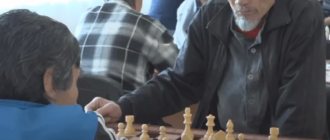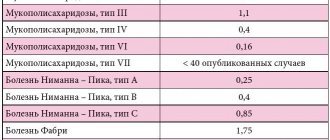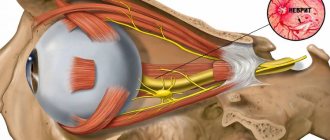Motor neuron disease according to ICD-10 belongs to the class of diseases with systemic atrophy of elements of the central nervous system. Motor nerve disease (MND) is also called amyotrophic lateral sclerosis (ALS) or motor neuron disease. This disease is characterized by damage to the upper neurons of the brain with subsequent disruption of their communication with the spinal cord. As a result of the disease, paralysis of the entire body develops.
Today, MND is considered an incurable disease. All therapeutic agents are aimed at slowing the progression of the pathological process and improving the patient’s quality of life. At the Yusupov Hospital, highly qualified neurologists provide supportive care to patients with MND, which helps alleviate their condition.
Causes
Based on the fact that motor neuron disease according to ICD-10 is classified as a systemic atrophy affecting predominantly the central nervous system, its main characteristics are degenerative processes in the central gyri of the frontal lobes. The destructive process spreads to the nuclei of motor neurons of the brain stem with changes in the corticospinal tracts. The result is slowly progressive muscle atrophy.
The causes of MND include heredity and environmental factors. In familial cases of the development of pathology, mutations of individual genes encoding DNA-binding proteins are noted. The hereditary form of the pathology occurs in 5-10% of cases. In other cases, the cause of the pathology remains unknown.
Provoking factors may be:
- shock and mechanical injuries of the brain and spinal cord;
- excessive physical activity;
- exposure to harmful substances.
Currently, motor nerve disease continues to be studied. Now theories are being developed about the connection of pathology with disruption of the chemical structures of RNA, failure of transport of metabolic products in cells, and disruption of energy metabolism. Research has shown that infectious diseases such as polio do not cause motor nerve disease, although they are characterized by progressive muscle atrophy. Although the pathologies have approximately the same end result, their mechanisms of action are different.
Diagnosis of motor neuron disease
There are no specific tests to diagnose most motor neuron diseases, although genetic testing for SMA genes currently exists. Symptoms may vary among patients and in the early stages of the disease may be similar to those of other diseases, making diagnosis difficult. The physical examination is followed by a thorough neurological examination. Neurological tests will evaluate motor and sensory skills, nervous system functioning, hearing and speech, vision, coordination and balance, mental status, and changes in mood or behavior.
Tests to rule out other diseases or measure the extent of muscle damage may include the following:
Electromyography (EMG) is used to diagnose lower motor neuron disorders, as well as muscle and peripheral nerve disorders. In an EMG, a doctor inserts a thin needle-shaped electrode attached to a recording instrument into the muscle to evaluate electrical activity during voluntary contraction and at rest. Electrical activity in the muscle is caused by lower motor neurons. When motor neurons are lost, characteristic abnormal electrical signals occur in the muscle. Testing usually takes about an hour or more, depending on the number of muscles and nerves being tested.
EMG is usually performed in combination with nerve conduction velocity testing. Nerve conduction studies measure the speed at which impulses are transmitted in nerves from small electrodes attached to the skin, as well as their strength. A small pulse of electricity (similar to a shock from static electricity) stimulates the nerve that controls a specific muscle. The second set of electrodes transmits a response electrical signal to the recording device. Nerve conduction studies help differentiate lower motor neuron disease from peripheral neuropathy and can detect abnormalities in sensory nerves.
Laboratory tests of blood, urine, and other substances can help rule out muscle diseases and other disorders that may have symptoms similar to those of motor neurone disease. For example, analysis of the cerebrospinal fluid, which surrounds the brain and spinal cord, can detect infections or inflammation that can also cause muscle stiffness. Blood tests may be ordered to measure levels of the protein creatine kinase (necessary for chemical reactions that produce energy for muscle contractions); high levels allow the diagnosis of muscle diseases such as muscular dystrophy.
Magnetic resonance imaging (MRI) uses a powerful magnetic field to produce detailed images of tissue, organs, bones, nerves and other structures of the body. MRI is often used to rule out diseases that affect the head, neck and spinal cord. MRI images can help diagnose brain and spinal cord tumors, eye diseases, inflammation, infection and vascular disorders that can lead to stroke. MRI can also detect and monitor inflammatory diseases such as multiple sclerosis. Magnetic resonance spectroscopy is a type of MRI scan that measures levels of chemicals in the brain and can be used to assess the integrity of upper motor neurons.
A biopsy of muscles or nerves can confirm the presence of neurological disorders, in particular impaired nerve regeneration. A small sample of muscle or nerve tissue is taken under local anesthetic and examined under a microscope. The sample can be removed surgically through an incision in the skin or by biopsy, in which a thin, hollow needle is inserted through the skin into the muscle. A small amount of muscle tissue remains in the hollow needle when it is removed from the body. Although this test can provide valuable information about the extent of damage, it is an invasive procedure and many experts believe that a biopsy is not always necessary for diagnosis.
Transcranial magnetic stimulation was first developed as a diagnostic tool to study areas of the brain associated with motor activity. It is also used as a treatment for certain diseases. This non-invasive procedure creates a magnetic pulse inside the brain that causes movement in an area of the body. Electrodes attached to various areas of the body collect and record electrical activity in the muscles. Measures of evoked activity can diagnose motor neuron dysfunction in motor neuron disease or monitor disease progression.
Motor Neuron Disease: Types
Motor neuron disease has ICD-10 code G12: Spinal muscular atrophy and related syndromes. It belongs to a group of neurological diseases in which motor neurons are damaged. Synonyms: Lou Gehrig's disease, Charcot's disease. In many countries, it is customary to use the term “amyotrophic lateral sclerosis” (ALS) to refer to motor neuron disease, as the most common pathology in this group. This also includes:
- hereditary spastic paraplegia;
- primary lateral sclerosis;
- progressive muscle atrophy;
- motor neuron disease, bulbar form;
- pseudobulbar palsy;
- primary lateral sclerosis.
The disease is characterized by degeneration of motor neurons in the cerebral cortex, brain stem, corticospinal tracts and spinal cord. The result is progressive muscle paralysis.
The disease is rare. Its prevalence is approximately 2-3 people per 100 thousand per year. Most often, the disease occurs in people aged 60-70 years, although it is possible that the pathology may develop in people under 40 years of age.
Publications in the media
Amyotrophic lateral sclerosis (ALS) is a chronic, progressive neurodegenerative disease characterized by damage to motor neurons in the brain and spinal cord and degeneration of their axons. Frequency • Approximately five people per 100,000 population are affected • On average one new case per 100,000 population per year. Prevalent age • The average age of onset is 55 years • The likelihood of occurrence increases with age. The predominant gender is male (1.5–2:1).
Classification • Sporadic ALS, the most common form of the disease • Familial ALS - a disease clinically similar to sporadic forms of ALS - 5-10% of cases • Guam Island complex (ALS-dementia-parkinsonism complex) - a rare syndrome similar to ALS, usually (but not always) associated with parkinsonism and dementia. Relatively common among the indigenous population of the Pacific island of Guam.
Etiology and pathogenesis • The etiology of sporadic ALS is unknown. As the disease progresses, degeneration of motor neurons in the brain (in the cortex and brainstem) and spinal cord (in the anterior horns) and their axons (in the corticobulbar, corticospinal tracts and peripheral nerves) occurs. The role of glutamate is suggested in the pathogenesis of the disease • Some cases of familial ALS are caused by dominant mutations of the gene encoding the formation of the enzyme Cu/Zn superoxide dismutase (SOD-1, locus 21q22.1–q22.2). Normally, SOD-1 inhibits IL-1b-converting enzyme. Under the influence of the latter, IL-1b is formed, which initiates the death of neurons after binding to its membrane receptor. The product of the defective SOD-1 gene is not capable of inhibiting the IL-1b-converting enzyme; the resulting IL-1b induces the death of motor neurons at various levels of the nervous system. Given the presence of a recessive form, familial ALS has more than 1 locus in the genome. The recessive form is rare and more common in Tunisia (205100), characterized by early onset (average age 12 years) • The etiology of the Guam complex is unknown. Genetic and environmental factors are considered to be the causes of the disease. In typical cases, the syndrome is characterized by a combination of ALS, parkinsonism and dementia in members of the same family.
Genetic aspects: • deficiency of superoxide dismutase 1, 147450, SOD1, 21q22.1, ALS1, 105400; • ALS2, 205100, 2q33 q35.
Pathomorphology • Atrophy or absence of motor neurons, accompanied by moderate gliosis without signs of inflammation •• Loss of giant pyramidal cells (Betz cells) of the motor cortex •• Death of motor neurons in the anterior horns of the spinal cord, the most pronounced changes occur in the cervical and lumbar segments •• Cell death in the motor nuclei of the brain stem, the most pronounced changes occur in the nucleus of the hypoglossal nerve • Degeneration of the lateral pyramidal tracts of the spinal cord • Atrophy of the anterior roots • Atrophy of groups of muscle fibers (as part of motor units).
Clinical picture
• Various combinations of the following main symptoms: •• Signs of dysfunction of the motor neurons of the anterior horns of the spinal cord - weakness and muscle atrophy - most often begin in the arms and, less often, feet, progress asymmetrically and lead to difficulty performing movements •• Painful spasms (cramps), may precede muscle weakness •• Symptoms of spinal cord motor neuron dysfunction are soon joined by signs of damage to the corticospinal tracts: visible muscle fasciculations, spasticity, increased deep tendon (including masticatory) and extensor plantar reflexes (Babinski reflex) •• Dysarthria (speech impairment) and dysphagia ( swallowing disorder) •• Sensitivity, voluntary eye movements and autonomic functions are preserved.
• Associated symptoms •• Unexplained weight loss •• Emotional lability.
Diagnostic criteria • Onset in middle or old age, usually after 40 years • Progressive muscle weakness, generalized lesions • No sensory impairment.
Diagnostic procedures • Electromyography: fibrillations, positive waves, fasciculations even in clinically unaffected muscles • Muscle biopsy: group atrophy of muscle fibers • The speed of nerve impulses is preserved until the later stages of the disease.
Differential diagnosis • Lead intoxication • Spinal muscular atrophy (in adults) • Primary lateral sclerosis • Familial spastic paraparesis • Spinal multiple sclerosis • Tropical spastic paraparesis • Myopathies • Intervertebral disc herniation • Spinal cord tumors • Syringomyelia • Congenital anomalies of the cervical spine • Diabetic amyotrophy • Poliomyelitis.
TREATMENT
Physical activity. The patient should maintain physical activity to the best of his ability • As the disease progresses, the need for a wheelchair and other special devices becomes necessary.
Diet • Dysphagia creates a risk of food entering the airways • Sometimes a feeding tube or gastrostomy tube is necessary.
Drug therapy • Baclofen - to reduce spasticity • Quinine or phenytoin - to reduce painful spasms • TAD (amitriptyline 10 mg 4 times a day).
Observation • Every 3 months • More often as the disease develops and symptomatic therapy is necessary.
Course and prognosis • The disease is incurable, mortality is 100%, average life expectancy is about 5 years from the moment of diagnosis • 50% of patients die within 3 years, 20% live 5 years, 10% - 10 years from the onset of the disease • With familial dominant form - incomplete penetrance; by the age of 85 years, only approximately 80% of mutation carriers have clinical manifestations.
Age-specific features • Spinal muscular atrophies in children and adolescents are clinically and pathologically distinct from ALS • ALS symptoms are sometimes mistakenly attributed to older age.
Synonyms • Charcot's disease • Low Gehrig's disease.
ICD-10 • G12.2 Motor neuron disease
Symptoms
Progressive muscular atrophy is caused by dystrophic processes in motor neurons.
Clinical manifestations will depend on which group of cells is affected. For example, motor neuron disease amyotrophic lateral sclerosis results from damage to neurons in the precentral gyrus and spinal cord. Spastic paraplegia develops with disorders in the precentral gyrus. Progressive bulbar palsy occurs against the background of changes in the functioning of the bulbar group of caudal nerves with damage to their nuclei and roots. As the pathology progresses, the patient experiences motor disturbances, problems with swallowing, breathing, and communication skills deteriorate. The disease has the following characteristic symptoms:
- hand function and fine motor skills deteriorate. It is difficult for the patient to perform the simplest tasks: open a door handle or faucet, take an object, press a button;
- weakness in the legs increases, which leads to difficulties in movement;
- the neck muscles weaken, as a result of which it becomes difficult for the patient to breathe, swallow food and water;
- the disease often affects the muscles that are involved in the breathing process;
- if the areas of the brain responsible for emotions are damaged, the patient may not control his behavior, periodically laughing or crying for no reason.
As the pathology progresses, memory deteriorates, concentration decreases, and communication with other people becomes difficult. In later stages, the patient becomes completely immobilized and requires constant care. In this case, the disease does not affect the intellect, the patient continues to feel taste and smell, hearing and vision are not affected. The functions of the heart muscle, intestines, bladder, and genital organs remain unchanged.
Amyotrophic lateral sclerosis (ALS)
The disease was first described by the Frenchman Jean-Martin Charcot in 1869.
This is the most common form of the disease (about 80-85% of all cases of MND), when motor neurons of both the brain and spinal cord are involved in the pathological process. The disease is characterized by steadily progressive muscle weakness and muscle atrophy. Depending on the level of localization of the primary lesion of motor neurons, a distinction is made between the bulbar form of the disease, when motor neurons in the brain stem are primarily damaged, the cervicothoracic form - when the primary lesion is localized at the level of the cervical thickening, and the lumbosacral form of the disease. The most favorable course is considered to be the lumbosacral form of ALS. The average life expectancy of such patients can reach 7-8 years. In some cases, the duration of the disease reaches 10 or even 15 years. The disease usually develops in the 5th-6th decade of life and is 2 times more common in men.
The disease debuts in most cases with the appearance of weakness and weight loss in the muscles of the arms or legs, often accompanied by muscle twitching (fasciculations), however, it should be remembered that the presence of isolated muscle twitching without the appearance of weakness or malnutrition is not always a sign of ALS!
Among the famous people who suffered from ALS were the composer Dmitry Shostakovich, the Chinese politician Mao Zedong, the singer Vladimir Migulya, and the American astrophysicist Stephen Hawking, whose disease duration exceeded 50 years.
Progressive Bulbar Palsy (PBP)
The main difference between PPD and other types of motor neuron disease is the rapidly increasing impairment of speech and swallowing. The localization of the primary process is the brain stem. Life expectancy ranges between 6 months and 3 years from the onset of symptoms.
Primary lateral sclerosis (PLS)
A rare form of MND that exclusively affects the motor neurons of the brain, resulting in increased spasticity in the limbs. The patient is practically unable to independently bend an arm or leg due to high tone. Distinctive features of this type of MND are the absence of malnutrition, fasciculations and speech disorders. The duration of the disease is usually more than 10 years.
Progressive Muscular Atrophy (PMA), Drop Arm Syndrome
This is a rare type of MND that primarily damages the motor neurons in the spinal cord.
The disease in most cases begins with weakness or clumsiness in the hands. Most people live with this type of MND for more than 5 years. Here are the most common symptoms and characteristics of the different types of MND. However, it must be remembered that with the same type of motor neuron disease, symptoms may manifest differently in different people, and the prognosis may also differ. If symptoms such as gradually increasing speech disturbances, choking when swallowing, weakness in the arms and legs, muscle twitching appear, you should seek medical help as soon as possible from highly qualified neurologists at the Yusupov Hospital, who will help determine the causes and prescribe adequate treatment.
It is necessary to understand that diagnosing ALS is very difficult, since it is a fairly rare disease, and neurologists often encounter isolated cases of this disease in their practice. The absence of certain specific symptoms of the disease also makes diagnosing ALS difficult. It is known that the diagnosis is established on average 1-1.5 years from the moment the first symptoms appear, and the time for treatment has already been lost.
Make an appointment
Mysterious mutant gene
Why does a person get ALS? Nobody knows this. Or rather, there are many assumptions, but doctors still don’t know how exactly this disease occurs. Genetics can provide the most information, since ALS is essentially a genetic mutation.
One of the conference guests was Christian Lunetta, scientific director of the NeMo Center for Neuromuscular Diseases in Milan.
. He said that ALS most likely begins in a person many years before the first symptoms appear.
“When the patient is finally diagnosed, the level of damage is most often already very significant. Of course, there must be some risk factors for ALS - perhaps external. We can say for sure that a powerful risk factor is the presence of a familial form of ALS, that is, a genetic mutation. And recently, this is the most difficult part of the research - to determine the genes in which there are faults,” said the doctor.
Christian Lunetta. Photo: Irina Fomochkina/MIR MTRK
With the familial form, everything is more or less simple - this is when a gene with a mutation is inherited, explains biologist, founder of the Clinical Bioinformatics Laboratory Fedor Konovalov.
“When we talk about the genetics of ALS, we primarily mean, of course, familial cases, of which there are about 10%. This is a direct transmission to descendants (not through a generation) with a probability of 50%. Moreover, this does not depend on gender. The patient has a mutant gene on one of his chromosomes, while the other chromosome is normal. A person passes on only one of each pair of chromosomes to each child, the second from the second parent. Thus, it turns out that the patient has a 50% probability of passing on the defective chromosome to any of his descendants,” explains Konovalov. But sometimes mutations arise, as geneticists say, de novo: both parents are healthy and will never develop ALS, but one of their children develops the disease. This form of ALS is called sporadic.
“And it can be hereditary in nature,” Konovalov clarifies. – From the point of view of family history, the case is sporadic, but de facto it is hereditary. The mutation appeared either during the embryogenesis of this person, or during the formation of germ cells in the parents. The important thing is that when this happens, the mutation, having occurred in a sporadic case, can then be inherited as a family one.”
Photo: Irina Fomochkina/MIR MTRK
Diagnostics
There are several diagnostic methods and indicators that indicate the suffering of motor neurons and muscles.
Blood analysis
The main indicator that can indicate the suffering of motor neurons and muscles is the level of creatine phosphokinase. Levels of the enzyme increase as muscle tissue breaks down, and levels may be elevated in people with ALS. However, this indicator is not a specific sign of pathology, since it can also be an indicator of other diseases associated with muscle damage (myocardial infarction, myositis, trauma).
Electroneuromyography (ENMG)
For an accurate diagnosis of ALS, it is necessary to conduct both needle electromyography, using thin needles, with which the doctor assesses the state of electrical activity of damaged and undamaged muscles, and stimulation electroneuromyography to exclude disturbances in the conduction of sensory fibers, which in ALS almost always remain intact.
Transcranial magnetic stimulation (TMS)
This is a new method that can be performed simultaneously with ENMG. It is designed to assess the condition of motor neurons in the brain. TMS results can help make a diagnosis.
Magnetic resonance imaging (MRI)
MRI can detect damage in the brain and spinal cord caused by stroke, Alzheimer's disease, Parkinson's disease, multiple sclerosis, tumors and spinal cord and brain injuries. In some cases, MRI reveals signs that are characteristic only of MND/ALS - this is the luminescence of the pyramidal tracts, which are affected in this disease.
Other methods
To verify the diagnosis, it is also necessary to perform a lumbar puncture, assess the function of external respiration, and conduct cardiorespiratory monitoring. These studies make it possible to identify changes that in the early stages do not bother the patient, but make a detrimental contribution to the progression of the disease.
It should always be remembered that ALS is a disease of exclusion, and the final diagnosis is made only after a full, high-quality examination of the patient under the supervision of experienced neurologists who have extensive experience working with such patients.
Medicines are not for everyone
Although there is no cure for ALS yet, there are drugs that can make life easier for patients. Only here there is one important “but”: the drugs have the greatest effect in the early stages of the development of the disease. That is, the longer a person is sick and not treated, the more difficult it will be for him to maintain his condition in the future. The main drugs indicated for patients with ALS in our country and abroad are Riluzole and Edaravone. Both, however, are not registered in Russia. Lev Brylev, a neurologist and medical director of the Live Now Foundation, spoke about them at the conference
“The effectiveness of Riluzole is very well proven; studies have been conducted on a very large number of people. There is an effect from this drug, but, unfortunately, it is small. Many experts have questions about Edaravone’s effectiveness, because the study of this drug involved a rather limited number of patients with certain characteristics, moreover, many of them took Riluzole at the same time as Edaravone. However, the duration of treatment was only 24 weeks. I can immediately say that we do not have studies on longer-term use of this drug and data on what effect it will have after a year, two or three from the start of use,” Brylev emphasized.
Lev Brylev. Photo: Irina Fomochkina/MIR MTRK
Goals of therapy
Currently, there are no effective treatments for this disease. Therefore, therapy is aimed at:
- slow down the progression of the disease and prolong the period of illness during which the patient does not need constant outside care;
- reduce the severity of individual symptoms of the disease and maintain a stable level of quality of life.










